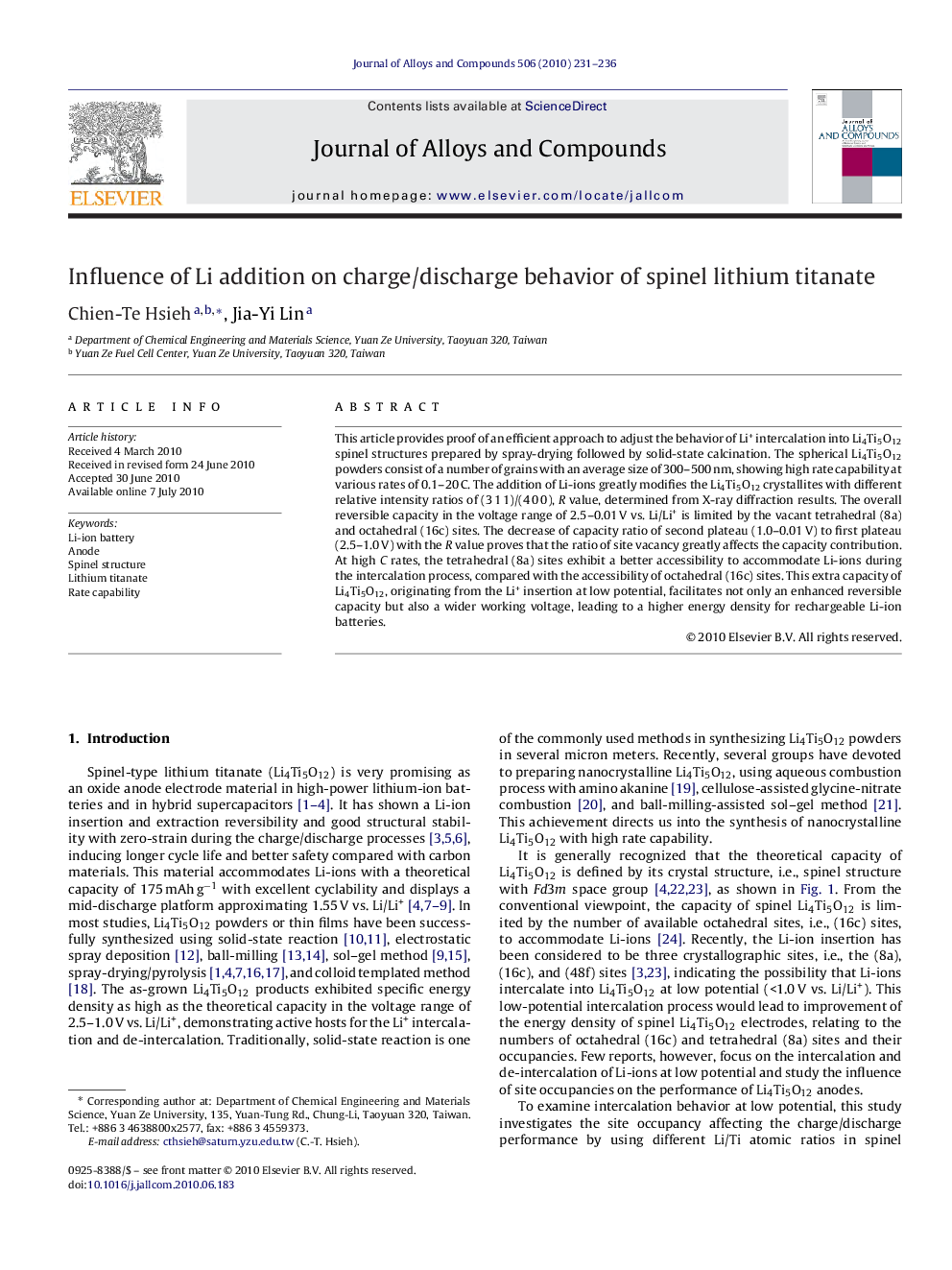| Article ID | Journal | Published Year | Pages | File Type |
|---|---|---|---|---|
| 1618539 | Journal of Alloys and Compounds | 2010 | 6 Pages |
This article provides proof of an efficient approach to adjust the behavior of Li+ intercalation into Li4Ti5O12 spinel structures prepared by spray-drying followed by solid-state calcination. The spherical Li4Ti5O12 powders consist of a number of grains with an average size of 300–500 nm, showing high rate capability at various rates of 0.1–20 C. The addition of Li-ions greatly modifies the Li4Ti5O12 crystallites with different relative intensity ratios of (3 1 1)/(4 0 0), R value, determined from X-ray diffraction results. The overall reversible capacity in the voltage range of 2.5–0.01 V vs. Li/Li+ is limited by the vacant tetrahedral (8a) and octahedral (16c) sites. The decrease of capacity ratio of second plateau (1.0–0.01 V) to first plateau (2.5–1.0 V) with the R value proves that the ratio of site vacancy greatly affects the capacity contribution. At high C rates, the tetrahedral (8a) sites exhibit a better accessibility to accommodate Li-ions during the intercalation process, compared with the accessibility of octahedral (16c) sites. This extra capacity of Li4Ti5O12, originating from the Li+ insertion at low potential, facilitates not only an enhanced reversible capacity but also a wider working voltage, leading to a higher energy density for rechargeable Li-ion batteries.
Research highlights▶ The present work provides proof of an efficient approach to adjust the behavior of Li+ intercalation into Li4Ti5O12 spinel structures, prepared by spray-drying followed by solid-state calcination. ▶ The spherical Li4Ti5O12 powders consist of a number of grains with an average size of 300–500 nm, showing high rate capability at various rates of 0.1–20 C.
